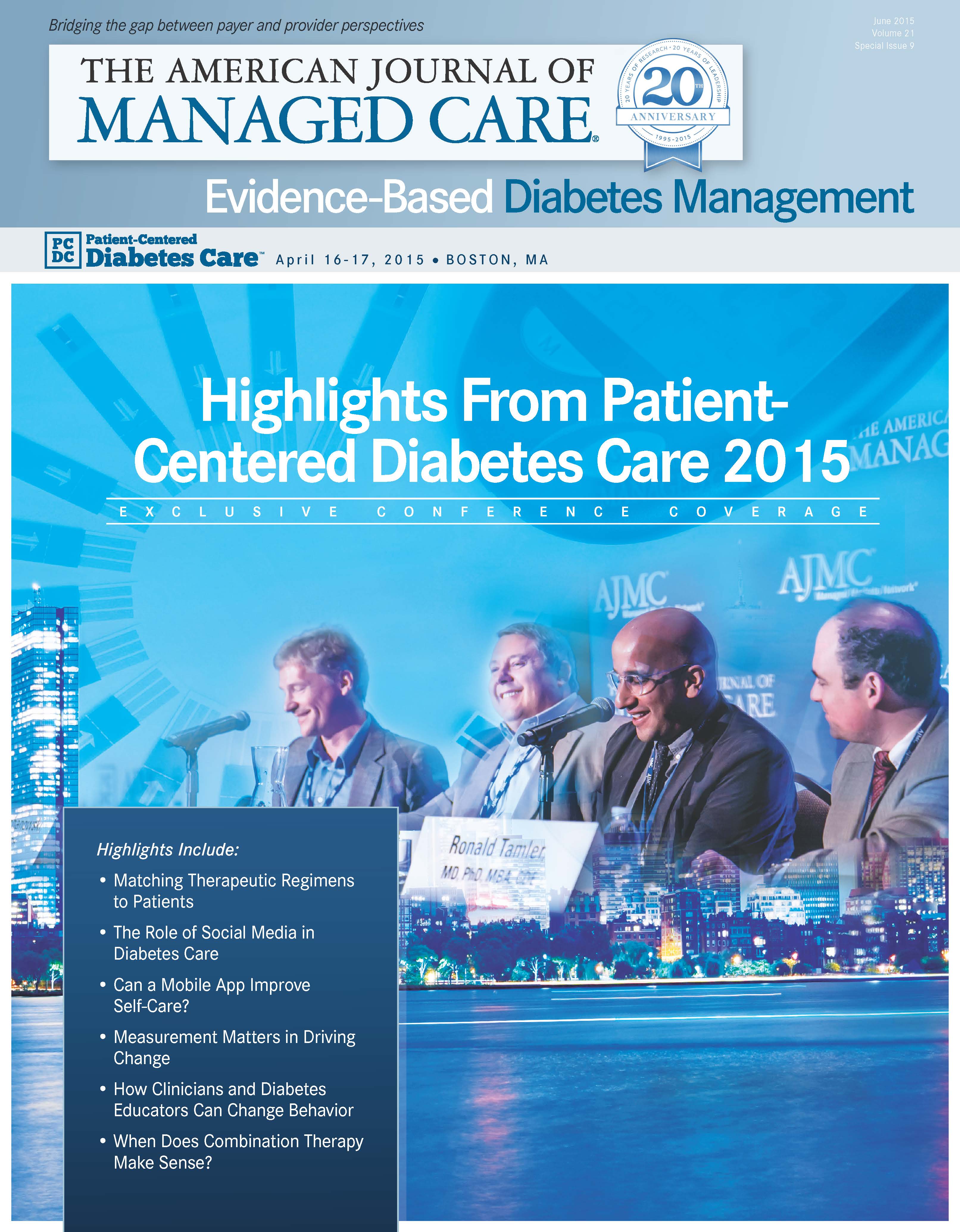
- Center on Health Equity & Access
- Clinical
- Health Care Cost
- Health Care Delivery
- Insurance
- Policy
- Technology
- Value-Based Care
Panelists: Social Media Can Offer Place for Type 1 Patients to Ask Questions They Don't Want to Ask the Doctor
Social media can give persons with #diabetes information they can't get elsewhere, but doctors aren't always ready to send patients websites because they may fear the information is unreliable.
A vibrant and helpful online diabetes community has developed over the past decade, but social media is far from fulfilling its potential as an education tool and support system, according to speakers on the panel, “Community as Part of the Prescription: Social Media in Diabetes Care.”
The discussion completed the first evening of Patient-Centered Diabetes Care 2015, the third annual multistakeholder conference, presented by The American Journal of Managed Care and Joslin Diabetes Center in Boston, April 16-17, 2015.
Panelists included a physician, 2 persons with type 1 diabetes mellitus (T1DM) who are leaders in social media, and a consultant who writes on diabetes and nutrition. All agreed that only a minority of those with T1DM go online in search of information for living with diabetes, and persons living with type 2 diabetes mellitus have very limited online presence, despite their overwhelming numbers in the population.
Thomas Hawkins, MD, MS, senior medical director of population health at Blue Cross Blue Shield of Massachusetts and an instructor in population medicine at Harvard Medical School, said he knew several medical groups who may direct their patients to a website they trusted to answer their “3-in-the-morning questions’’ about the stresses and demands of managing their illness.
“But I have to feel comfortable,’’ Hawkins added.
Hope Warshaw, MMSC, RD, CDE, BC-ADM, described herself as “an early adopter of social media,” beginning in 2010, when she discovered “the diabetes online community.’’ Using online diabetes resources “certainly doesn’t replace diabetes education,’’ she said, adding that the online community is small.
“Pretty minimal numbers of people [are] engaged in the diabetes online community,’’ Warshaw said. “Very much more it’s people with type 1 or caregivers of a loved one with type 1. There’s a pretty small percentage of people with type 2 diabetes [who are] engaged.’’
Kerri Sparling and Amy Tenderich, MA, who both have T1DM, independently started blogging about life with the illness in 2005. Tenderich is founder and editor of DiabetesMine, which recently became part of HealthLine.com, and Sparling writes the blog Six Until Me. Online discussion and information sharing is not an alternative to standard medical care and education, but it does provide a valuable supplement, they each said.
“I go to the [online] community to find out how to actually integrate [the doctor’s] excellent medical advice into my actual life,” Sparling said. Her doctor might say, “This is how you wear an insulin pump. I’m like, that’s great, and then I go to the community [and they ask], ‘How do I have sex with an insulin pump on?’” “The psychological and the social aspects of living with these illnesses have not been well addressed, and maybe the healthcare establishment can’t ever do that,” Tenderich said. “We try to fill that gap, bring some compassion and humor, and the kind of information that helps you out in the real world with your illness.”
Hawkins said he has overseen large, demographically diverse surveys of diabetes patients and found little reliance on the Internet for information or support. “They rely heavily on family advice. They still have a reverence for their physicians,” he said.
Large group practices, he said, would “write a prescription for a reasonably intact discussion group, blog, that’s self-policing and will help people with 3-in-the-morning questions about diabetes or things they’re too embarrassed to ask [their doctor].”
Sparling said, “I know that some healthcare professionals are reluctant to refer out to specific sites because they don’t want to be held responsible for whatever rant any of us may be on, on any given day.”
There is a need for ready access to a listing of the websites focused on dia-betes, with information that could con-fidently be used by clinicians to refer those websites, Tenderich said. “We’ve been fighting this fight for a number of years now trying to get that recognition that [a doctor’s social media recommendation] needs to be part of the prescription,” she said.

Trends in Hospital Pricing for Vulnerable Emergency Department Users, 2021-2023
December 4th 2025Self-pay emergency department prices rose significantly from 2021 to 2023, especially at for-profit and system-affiliated hospitals, highlighting growing affordability challenges for uninsured and underinsured patients.
Read More
Integrated Care for Chronic Conditions: A Randomized Care Management Trial
December 3rd 2025The authors sought to understand the differential impact of payer-led community-based care management approaches on stakeholder-oriented outcomes for publicly insured adults with multiple chronic conditions.
Read More
Trends in Hospital Pricing for Vulnerable Emergency Department Users, 2021-2023
December 4th 2025Self-pay emergency department prices rose significantly from 2021 to 2023, especially at for-profit and system-affiliated hospitals, highlighting growing affordability challenges for uninsured and underinsured patients.
Read More
Integrated Care for Chronic Conditions: A Randomized Care Management Trial
December 3rd 2025The authors sought to understand the differential impact of payer-led community-based care management approaches on stakeholder-oriented outcomes for publicly insured adults with multiple chronic conditions.
Read More
2 Commerce Drive
Cranbury, NJ 08512
AJMC®
All rights reserved.
